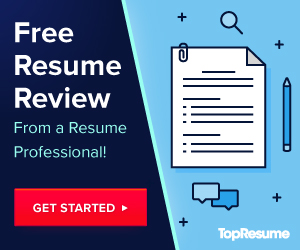Struggling to convey your distinguished career in a compelling executive resume? looking for jobs for seniors. If you believe your resume is disjointed and fails to tell employers who you really are, you’re probably right.
Here’s why: we’re taught to be good at what we do, but not to articulate our value proposition. You may spend many waking hours spearheading change, handling corporate strategy, leading large teams, or directing enterprise-scale projects – but not a single minute thinking about how to represent these accomplishments to others.
As a result, writing about your executive career can be a difficult task – particularly without a strategic plan for showcasing your personal brand.
Read on for solutions to common challenges in developing a strong executive resume, with tips for improving your message – and simplifying your efforts:
Challenge #1: You’re struggling to focus on what’s relevant from your career.
Ever read a long, rambling story where nothing in particular stands out? Perhaps you’ve made lengthy, bullet-point lists of the duties in each position, along with some highlights of revenue generated, projects completed, or costs saved.
This is how many resumes are constructed, making employers navigate through details of each job (often getting lost in a sea of text).
The problem with this approach? There’s no signature theme of your career evident to the reader.
Solution: Start with the end in mind.
Answer these questions before even starting work on your resume:
What is your desired title in the next job? What do you want employers to know about you? How has your work had an impact on the entire company? What do others commend you for? What is your reputation among peers?
Now, write TO these answers, instead of starting with the detail. Put your target job title at the top (VP of Sales, CIO, Chief Audit Executive), then elaborate on the reasons you’re qualified for it.
You’ll find your story becomes centered on the characteristics and career impact you’ve had (in other words, your brand value to employers).
Challenge #2: You can’t figure out how to show the impact of previous jobs.
Many people start writing their resumes in reverse chronological order, realizing employers want to see their most recent job first. What you’re left with is a first page that touches on one or perhaps two jobs, without noting how you were promoted or where your unique experience originated.
While this is a great way to backtrack through your career, it’s also a more challenging way to assemble an executive resume. Often, the first page lacks context and shows only the scenarios from the past few years (which may not be sufficient at a leadership level).
Solution: Shape the outline of your resume to show relevant (even if older) detail.
Consider adding sections to the first page of your executive resume to emphasize key achievements from throughout your career.
You can call this area Career Highlights, Examples of Executive Performance, or another title that tells employers why these accomplishments matter when sizing up your potential.
An added bonus: this style allows for easier navigation by hiring authorities, who’ll be able to see why you’re qualified at your target career level.
Challenge #3: You’re trying to fit your experience into a too-tight space.
The old rules of resume writing (particularly those that required a single-page document) don’t apply anymore. Still, it can seem almost impossible to fold 20 to 40 years of hard-won experience and successes into even 2 or 3 pages.
Solution: Use a format designed around both a “snapshot” view and the breadth of your career.
If you write an executive resume in straight chronological order, readers must wade through all of the pages to find out where you attended college, what positions you held, and whether your past employers were noteworthy.
Try creating a single-page summary sheet instead, with your work history laid out on subsequent pages. Shown in both this CEO resume and COO – GM resume samples, this approach lets you use the first page as a standalone document or Networking Resume, while presenting all pages to an executive recruiter or search committee.
Take these tips to heart if you’re struggling to write an executive resume truly representative of your personal brand. An effective writing strategy and format (developed outside of your content) will go a long way toward expressing the right message to employers.
Photo Credit: Shutterstock
The post 3 Executive Resume Mistakes You Don’t Want To Make appeared first on CAREEREALISM.











